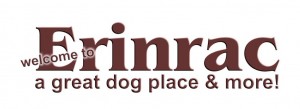After many years of breeding and selecting Old English Games, I decided to leave the breed. Pressure was beginning to be felt amongst the poultry exhibitors about dubbing, and although I can justify tail docking in my dogs (Clumber Spaniels), I did not feel I could offer a valid reason for continuing to dub exhibition poultry. So upon the death* of the current OEGs I thought I’d take the opportunity to select a new breed. I was sorely tempted to take on the Silver Campine as the layer, and the Dorking as the meat bird and brooder; however, I really don’t have the facilities I would like for two breeds and have decided to concentrate resources on the one.
The Dorking took my fancy as they are an old breed, like the Clumbers. And I was rather chuffed while reading Lewis Wright to see that John Douglas was instrumental in the development of the Silver Grey Dorking variety; for he was the last successful breeder of Clumbers at Clumber Park for the Duke of Newcastle under Lyne. That clinched the matter in my mind!
I hadn’t paid much attention to the Dorking in Australia over the years, other than to notice that they weren’t exhibited on many occasions in the last few decades, although quite popular in the early 1900s. A really nice hen was exhibited at Melbourne Royal in 1998 by Megg Miller; but other than that I don’t recall seeing any at shows, although I was never a really keen poultry exhibitor. So the search began. Consulting the largest rural newspaper, visiting a few shows, the rapidly improving auction scene, and referring to an invaluable booklet on “breeders”, my learning began in earnest.
The first Dorkings I saw were at one of the most popular auctions; a nice trio, cleanly marked, although the cock had a small extra toe, but with hindsight he was probably too small overall. This pen bought $38. A second pen at the same auction was a trio of very young chicks, they looked to have the size but there was no way you could assess the feathering. I understand this pen attracted vigorous bidding and finished over $50. A few more shows, and then the event of the decade.
 |
 |
A really well respected breeder, Alan Goodwin, was cutting down on his breeds due to ill health. He had only been in poultry in any degree for the last fifteen years, but his reputation for quality across a number of breeds was obvious from the crowd at the auction of his stock. Interest across all his breeds was strong, and the prices realized devastated many wouldbe bidders, including myself. Alas, I have misplaced my catalogue in which I recorded the fantastic prices, but premier cocks were knocked down for about $245! The lowest price was $110, for a male with marked stripping in his hackles and displaying a flash of white in the earlope. The girls also drew good prices, one pair (which actually came from another breeder) returned about $110. And I overheard, later, that one of the successful Dorking bidders had out laid some $700 for three birds.
So I came away empty handed, but having made contact with breeders and also booking some day old chicks from one of the cock buyers.
I now am the fascinated owner of a dozen in total young Dorkings from two breeders, growing out to good sizes and now slipping into their adult plumage. There are undoubtedly problems with some of this stock, but I have learned a lot in the last twelve months and will be very particular about future male purchases – hopefully at more realistic prices!
* the OEGs haven’t actually died out; I ran an advertisement for my Clumbers on our kennel club magazine and was contacted by some very old friends of my parents who were delighted to know I still had some OEGs from this line – the 12 year old cock and two hens have moved further into the country and are the proud parents of three healthy broods and the feature of an article in the American OEG Club newsletter!
